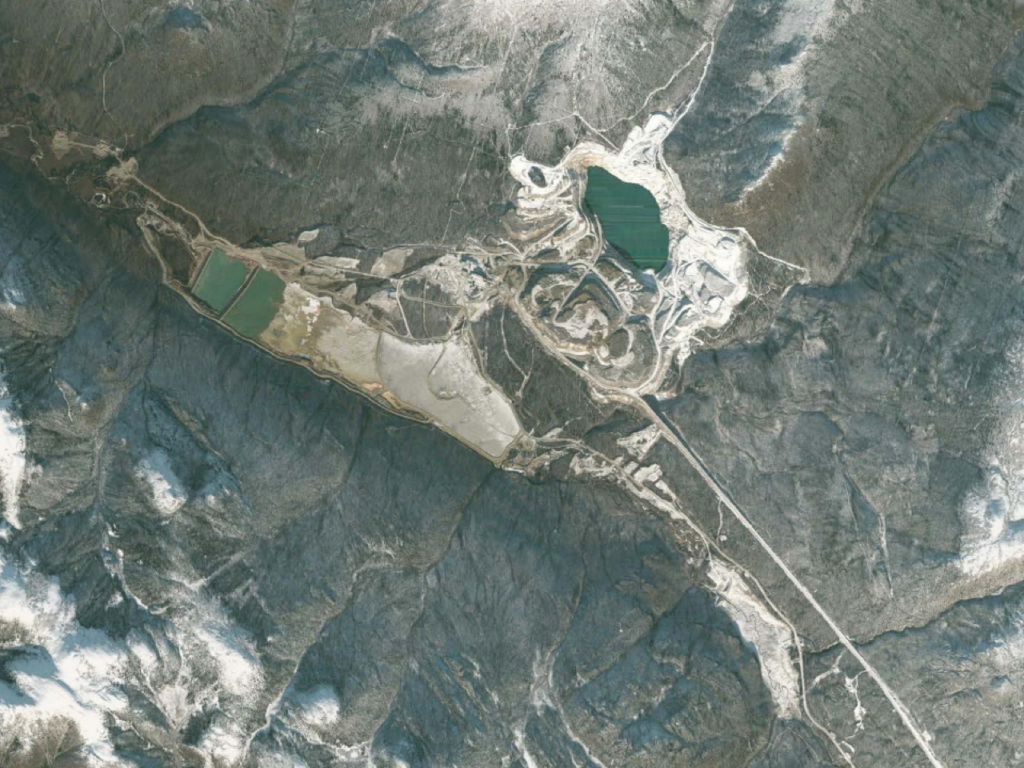Active Remediation
The active remediation phase includes construction activities to clean-up the Faro Mine, and other activities like taking down old buildings and getting rid of wastes in a safe manner. Care and maintenance activities will also continue during the active remediation phase.
Stabilizing the Mine Area, Tailings and Waste Rock
The remediation plan for the Faro Mine area, tailings storage areas, and waste rock dumps will be to stabilize these areas so that they are safe for people and wildlife. Another important goal will be to keep water away from wastes to prevent water from becoming contaminated and unsafe.
The remediation will largely be done by re‑shaping and covering tailings storage areas and waste rock dumps to protect people and the environment.
Activities that are planned for the remediation of the Faro Mine Area and of tailings and waste rock include:
- 1
Building a safety barrier, called a berm, around the Faro Pit to keep wildlife and people away from the pit.
- 2
Building a safety barrier, called a berm, around the Faro Pit to keep wildlife and people away from the pit.
- 3
Putting covers over waste rock dumps and the Rose Creek Tailings Area. The type of cover used will depend on how contaminated the wastes are. Thicker, denser covers will be used in areas that are more likely to release contaminants or metals that are unsafe for people or the environment.
- 4
Seeding and planting will be done once the covers are built, to keep the soils from eroding and to create a more natural looking landscape.
Using Soil and Rock for Construction
Borrow material, such as soil, sand, and rock, will be needed for construction activities. Rock and other types of borrow will be needed to build covers over the waste rock dumps and Rose Creek Tailings Area and to construct new water channels and roads. Some of this material can be taken from the Faro Mine Site, but some will need to come from nearby locations. In some cases, temporary work areas and roads will be built so that workers can access the sites. Disturbed areas, including borrow pits, will be reclaimed once the work is finished.

Removing Old Infrastructure and Cleaning Up Wastes
General clean-up activities are planned at the Faro Mine Site. These activities include:
Taking down buildings that are no longer needed. A total of 19 buildings will be removed from the site, including the old mill.
Removing pipelines and utility lines that are no longer needed.
Using the landfill that is on site to dispose of wastes that can go into a regular landfill.
Disposing of unsafe wastes, like contaminated buildings, drums of waste, and other wastes left over from mining. These wastes will be disposed of at special sites that are able to safely manage these wastes.
Cleaning up contaminated soil. Contaminated soil may be dug up and moved to the Rose Creek Tailings Area or the waste rock dumps, or a cap may be placed on top these soils, so they cannot harm wildlife or people.
Constructing Infrastructure for Remediation
New buildings and infrastructure, like pipelines, pumps, and roads, will be required during construction or as part of the clean-up activities.
Some new buildings will be constructed, including a camp that can house 220 people during peak periods. A building will also be needed for the new water treatment plant.
